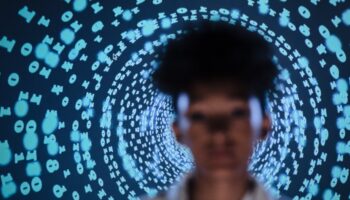The internet has come a long way since its creation. It has moved from simple websites to our current dynamic and interactive platforms. Web3.0 is one of the newest and most exciting developments in this field. In brief, Web3.0 is the next level of internet evolution that will lead to significant changes and new possibilities.
Understanding Web3.0
To understand the meaning of Web3.0, let’s go back in time for a while. The first web was known as web 1.0, and it was populated with static pages that were mostly there just for information purposes only, which did not require much interaction on part of visitors to those websites. Web 2.0 came along with user-generated data and an era of dynamic content. The social media networks and interactive sites became very common.
Now, however, Web 3 builds on these foundations but represents a paradigm shift itself in some respects. Unlike any previous versions, Web 3 is often called “semantic web” or “decentralized web.” The core idea behind Web3.0 is creating an intelligent, interconnected and user-centered network.
Core Principle: Decentralization
Decentralization stands out as a key characteristic of Web3.0. In the realm of Web 2.0 that we are presently in, numerous online endeavors are influenced by central powers or intermediaries. For example, social media platforms exercise control over the data and interactions that take place within their own domains.
The concept of Web3.0 aims to distribute control over the internet, granting power to users and nurturing a more democratic online world. To achieve this objective, decentralized technologies, such as blockchain, play a pivotal role. Blockchain, the technology that underpins cryptocurrencies like Bitcoin, facilitates secure and transparent peer-to-peer transactions without relying on intermediaries.
Web3.0 seeks to distribute this control, empowering users and fostering a more democratic internet. Decentralized technologies, such as blockchain, play a crucial role in achieving this. Blockchain, the technology behind cryptocurrencies like Bitcoin, enables secure and transparent peer-to-peer transactions without the need for intermediaries.
Smart Contracts: Automating Trust
Smart contracts are another integral component of Web3.0. These are self-executing contracts with the terms of the agreement directly written into code. Operating on blockchain technology, smart contracts automate and enforce contractual agreements, reducing the need for intermediaries and enhancing trust in online transactions.
For example, in a traditional online marketplace, you might rely on a third-party platform to facilitate a transaction and ensure both parties fulfill their obligations. With Web3.0 and smart contracts, the code itself enforces the terms of the agreement, cutting out the need for a middleman.
Enhanced Interoperability
Web3.0 aims to create a more connected internet where data and services can seamlessly interact across different platforms. This enhanced interoperability opens up new possibilities for users. Imagine a world where your data, such as your preferences, history, and identity, can be securely accessed and utilized across various applications without compromising your privacy.
Ownership of Data: Empowering Users
In the current internet landscape, tech giants often wield significant control over user data. Web3.0 seeks to shift this power dynamic by putting users in control of their own data. Through decentralized identity systems and data ownership protocols, individuals can decide who has access to their information and how it is used.
This shift towards user empowerment aligns with the broader ethos of Web3.0 – to create a more user-centric internet that respects privacy and individual agency.
NFTs and Digital Assets
Non-fungible tokens (NFTs) have become synonymous with Web3.0. These unique digital assets, often representing digital art or collectibles, are stored on blockchain, ensuring their scarcity and authenticity. NFTs have disrupted traditional notions of ownership and provenance, allowing creators to directly monetize their work and giving users a tangible way to own and trade digital assets.
Challenges and Considerations
While the promises of Web3.0 are exciting, it’s important to acknowledge the challenges. Scalability, energy consumption (especially with blockchain technology), and regulatory considerations are significant hurdles that need to be addressed for widespread adoption.
Additionally, as Web3.0 evolves, there may be social and ethical implications to consider. Issues such as digital identity, security, and the potential for new forms of online inequality must be carefully navigated.
The Future of Web3.0
Web3.0 is still in its early stages, and its full potential is yet to be realized. As developers, entrepreneurs, and innovators continue to explore and build upon this new paradigm, the internet is set to undergo transformative changes.
The decentralized nature of Web3.0 not only reshapes how we interact online but also opens the door to new business models, economic structures, and forms of collaboration. As the internet evolves from being a tool we use to a more integrated and intelligent part of our lives, Web3.0 stands as a testament to the ongoing evolution of the digital landscape.
In conclusion, Web3.0 represents a significant shift in the way we conceive and experience the internet. With its emphasis on decentralization, smart contracts, data ownership, and enhanced interoperability, Web3.0 holds the potential to redefine how we connect, transact, and share information online. As the journey into Web3.0 continues, we can anticipate a more inclusive, secure, and user-centric internet that empowers individuals and fosters innovation.
- THE EVOLUTION OF PLASTIC SURGERY - 17 June 2024
- CHOOSE THE RIGHT PERSONAL INJURY LAW FIRM IN CHARLOTTE NORTH CAROLINA - 16 June 2024
- Email UX optimization, offering actionable insights - 16 June 2024






1 Comment